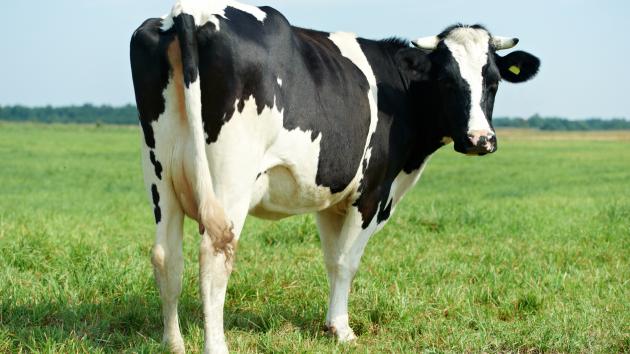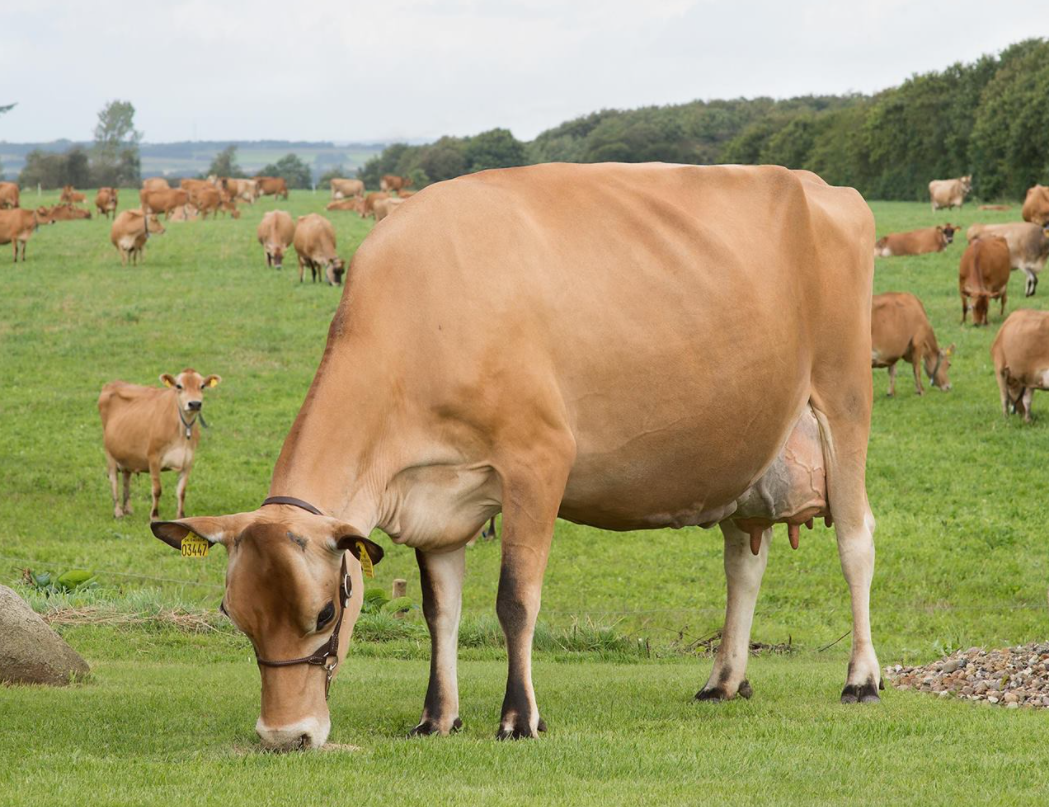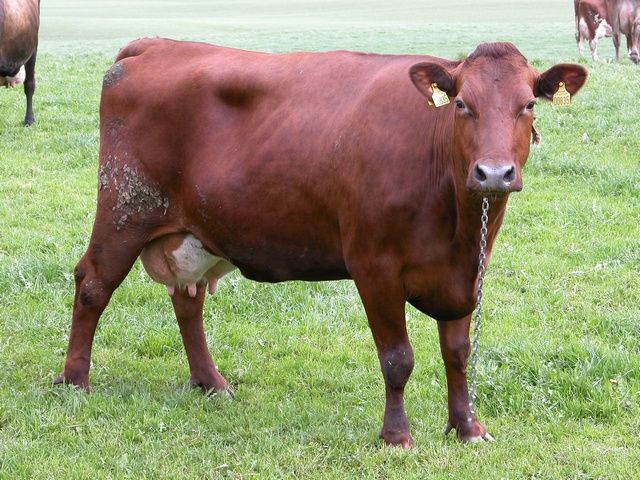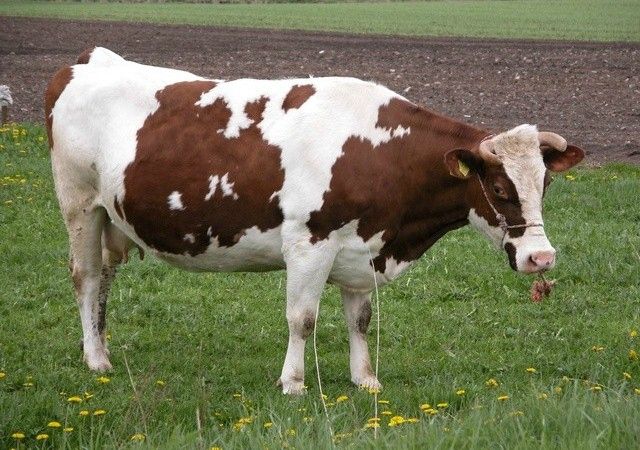Fermented-milk products in Denmark 🐄
There are many dairy products in Denmark, and it can be hard to choose between them. This article tries to provide some explanations and data to help make choices when it comes to milk, creme, yogurt and the like in Denmark.
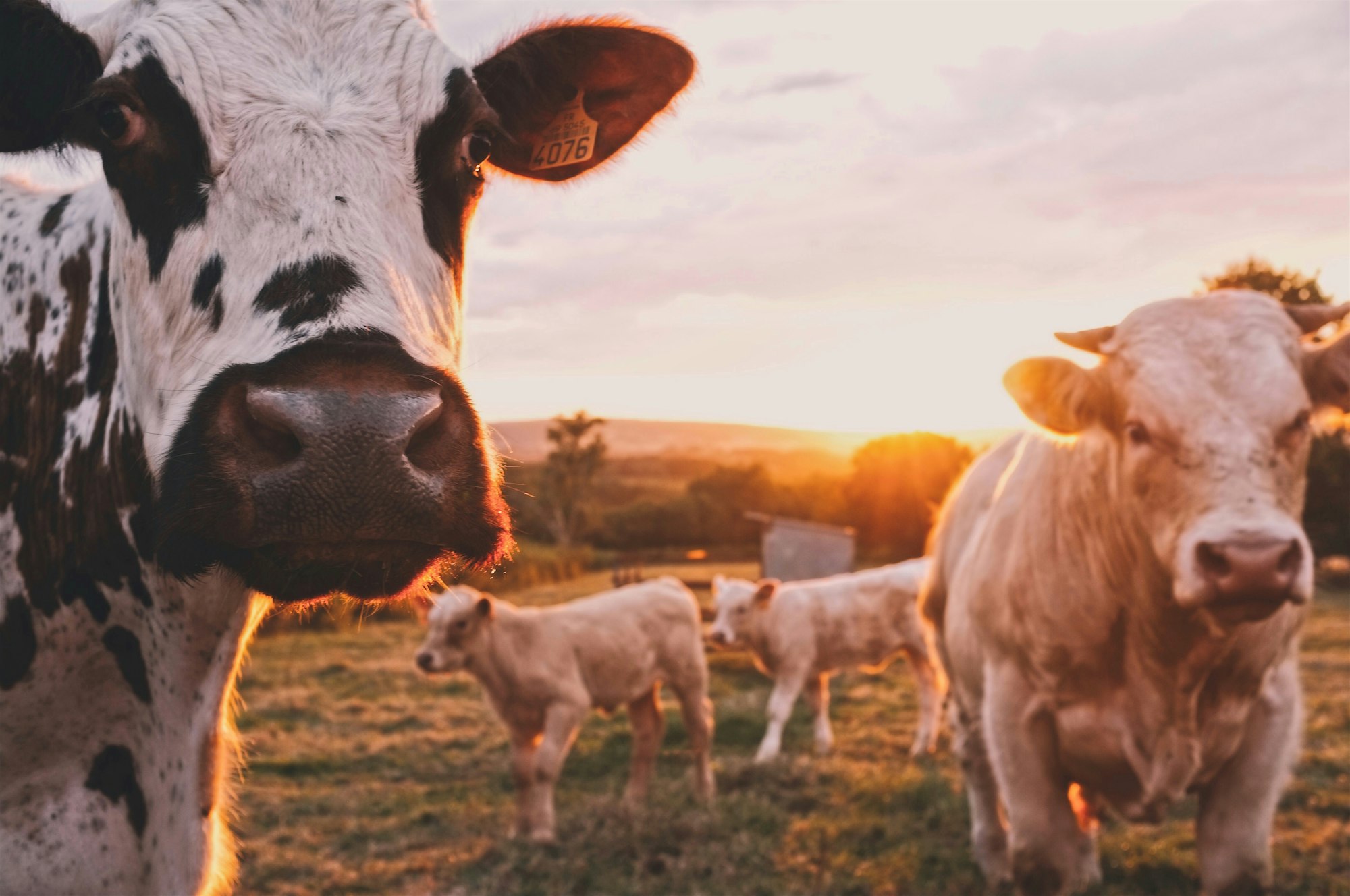
Introduction
There are many dairy products in Denmark, and it can be hard to choose between them. This article tries to provide some explanations and data to help make choices when it comes to milk, creme, yogurt and the like in Denmark.
Processing milk into different products
Raw milk can basically go through 3 different processes:
- Skimming: producing skimmed milk and cream
- Fermentation: resulting in different types of fermented-milk products, including yoghurt
- Coagulation: producing cheese and lactoserum
The rest of this article will be split between the main kinds of end products.
Milk
Milk collected from cows in dairy farms is (after some extra steps -- cooling, analyzing, resting) put in a centrifugal skimming machine, where skimmed milk is separated from creme.
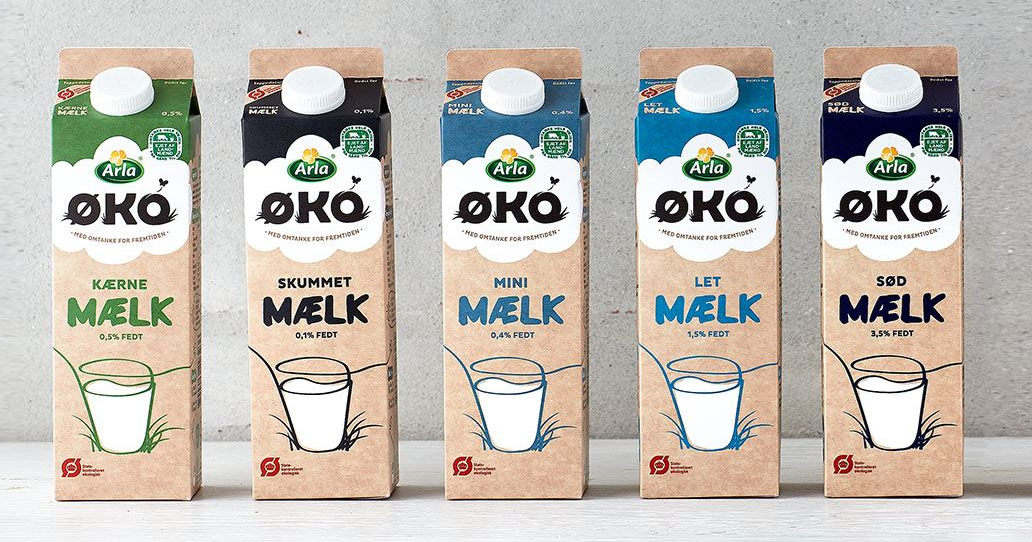
Creme is then (re-)added to skimmed milk up to the regulated % fat in order to produce the different grades that can be found in Denmark, listed in the table below.
| Dansk | English | % fat |
|---|---|---|
| Skummetmælk | Mini milk | 0.1% |
| Minimælk | Mini milk | 0.4% |
| Letmælk | Semi-skimmed milk | 1.5% |
| Sødmælk | Whole milk | 3.5% |
| Gårdmælk | Farm milk | 3.5-4,5% (non-regulated) |
Sødmælk (whole milk) was the most popular until skimmed milk was introduced to the Danish market in the 1970's. Letmælk hit the Danish shelves in 1972, and the rest followed during the growing trend from the 70's to the 00's to fight overweight issues in the population.[1]
Cream
The difference between the different types of cream lies essentially in the difference in fat content.
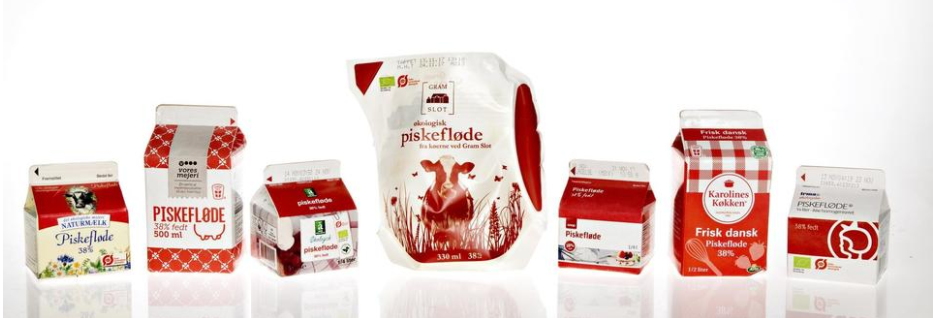
- Double creme = thick creme. 48% fat
- Piskefløde = classic cream used for cooking. It's the only one that can be whipped (pisket) to make whipped cream, hence its name. 38% fat
- Madlavningfløde = cream with added flour so that it can be used also for cooking with a lower fat content. 18% or 8% fat
- Kaffefløde = coffee cream (most popular among older generations). 9, 10 or 12% fat
The exception is when creme is thickened with the effect of lactic acid bacteria.
- Creme fraiche = acidified crème. Can be found in 38%, 18% or even 9% in its "fraiche" version (EU-rules requires a minimum of 18% of fat for a creme to be called creme fraiche[2])
Butter
Churning cream and cooling down the result creates butter.
- Smør = Butter. Found salted (saltet) or unsalted (usaltet) in supermarkets.
- Kærnemælk = Buttermilk or churned milk. Initially the by-product of butter production, most modern buttermilk is nowadays produced industrially by acidifying skimmed milk with a lactic acid bacteria mix (Lactococcus lactis or Lactobacillus bulgaricus plus Leuconostoc citrovorum which simulate the naturally occurring bacteria in the old-fashioned product). High in protein, low in fat and has a sharp taste. 0.5% fat.
- Koldskål = Cold buttermilk soup. It's a thick lightly sweetened buttermilk with vanilla, sometimes lemon. The Danes eat it during the summer with dry biscuits as snack, dessert even for dinner.
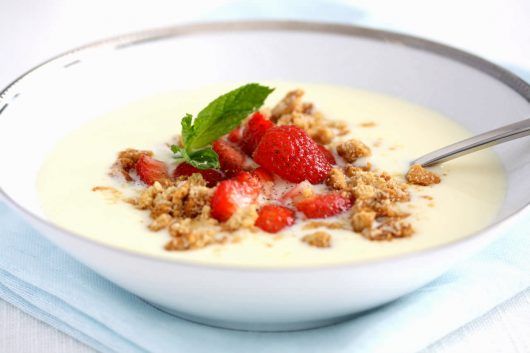
Koldskål
Cheese
Cheese is made by coagulation of milk triggered by the addition of lactic acid bacteria and/or rennet (østeløbe in Danish, présure in French) which is a complex set of enzymes produced in the stomach of cows.
The four PGI cheeses of Denmark
Although cheese may not be as big as in other countries like France, Danish cheese deserve their own article. It is at least worth noting already that 4 Danish cheeses have obtained the Protected Geographical Indication label from the EU (BGB-mærke -- Beskyttet Geografisk Betegnelse)[3].

- Danbo: most popular cheese in Denmark with an average consumption of 12 pieces per household per year[4]. Aged semi-soft cow-milk cheese found in the form of rectangular blocks, linked to the way it is fabricated: the curd is cut in tiny cubes but is left with the whey and is pressed like that in one giant rectangular cheese; then it is cut again in small blocks and left to mature with a bacteria culture on the outer surface.
- Danablue: Danish blue cheese
- Esrom: Semi-soft cow-milk washed-curd cheese.
- Havarti: Trappist-style pale yellow semi-soft cow's milk cheese
Fromage frais / friskost
 From left to right: kvark, hytteost, rygeost
From left to right: kvark, hytteost, rygeost
Friskost is a common term used to designate types of cheeses that is neither pressed nor refined in storage cellars[5]. 3 of the most popular are:
- Hytteost: cottage cheese. Fabricated out of low-pasteurized skimmed milk, varmed up and cut into dices after coagulation.
- Kvark: fabricated out of high-pasteurized skimmed milk coagulated with lactic acid bacteria and without rennet, a lot of whey is then removed, resulting in a low fat (1%) and high protein (12%) fresh cheese that is good for baking (helps create a good gluten network) or to make herbal dips.
- Rygeost: smoked cheese. Made out of high-pasteurized sødmælk or skummetmælk. Smoked primarily with straw.
Fermented milk products / Surmælksprodukter
Milk can also be fermented with certain types of lactic acid bateria to make yogurt. Among fermented milk products, in most countries (e.g. in the EU) the term yoghurt is restricted to semisolid fermented milk product obtained by the action of two specific lactic acid bacteria (Streptococcus thermophilus and Lactobacillus delbrueckii subsp. bulgaricus) when added to heat-treated milk[6]. Other products bear other names and are grouped in the category of "other fermented milk products" (surmælksprodukter).[6:1]
Yoghurt originates from the Balkans, where milk was traditionnally fermented with acidic cultures available in the region. It was first introduced in Denmark in the beginning of 1965[7], where it had some added strawberry and was marketed as a breakfast product. Since then, many variants of fermented milk products have been introduced: the difference in taste comes from the acidic culture used and in the fat content.[8]
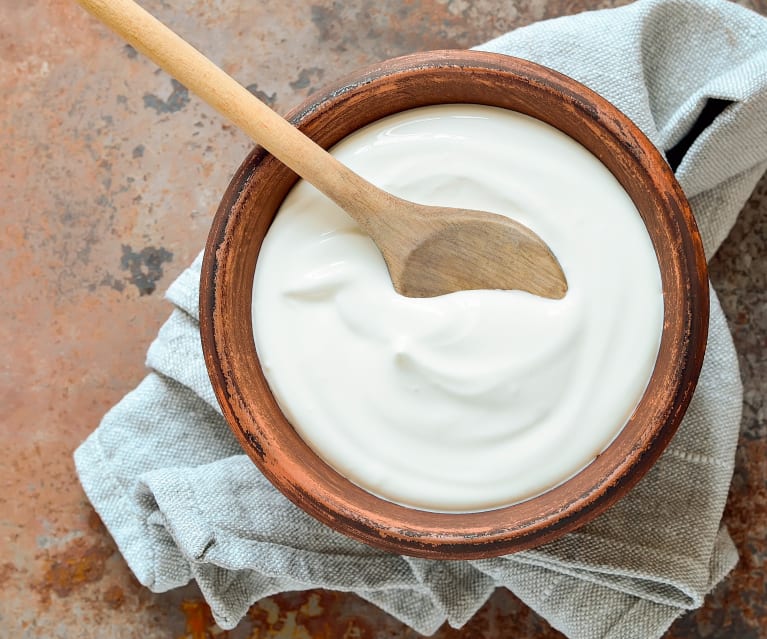
The below table attempts to give an overview of difference between them:
| Name | Base milk | Specific ingredient(s) / process | Comment |
|---|---|---|---|
| Cultura (Arla) | Sød eller letmælk | Fibres, Lactobacillus Casei F19 and others | Fresh acid taste, rich in fibres |
| Tykmælk | Sødmælk | Creme and a bit of kærnemælk | - |
| Ymer | Sødmælk | The whey is removed | Thicker, higher protein content |
| Ylette | Letmælk | Same as ymer | Same as ymer but lower fat content |
| Kefir | Sød- or letmælk | Saccharonyces yeast fungus + lactic acid bacteria culture from Caucasus | Light, foamy texture with a special aroma |
| Yoghurt Naturel | Letmælk | - | Light acidity |
| Greek yoghurt | Skummetmælk | Creme, greek bacteria culture | Soft round taste, thick and creamy |
| Skyr | Skummetmælk | Islandic bacteria culture | Sharp taste, thick and high in protein |
| A38 (Arla) | Skummet-, let-, or sødmælk | Lactobacillus acidophilus | It's a range of products, with creamy consistence and plain surface |
Statistics and sustainability
Types of dairy cows in Denmark
There are about 570,000 dairy cows in Denmark (and 250,000 meat cows)[9]. They are separated essentially in 4 different races[10]
| Rank | Dansk | % of dairy cows in DK[9:1] |
|---|---|---|
| 1 | Dansk Holstein | 70% |
| 2 | Dansk Jersey | 12% |
| 3 | Rød Dansk Malkekvæg | 6% |
| 4 | Dansk Rødbroget Holstein | 1% |
| - | Combination of 2 or more of the above | <1% |
A cow weighs typically 400-600kg, produces 20-35 liters of milk per day and eat 50-70kg of food daily[10:1]. The Danish Holstein (and Holstein breeds worldwide in general) are known for the very high milk yield (production). The Danish Jersey is smaller, but its milk contains 15% more proteins and also more vitamins, etc.
Consumption
Here are the statistics from 2019, according to the industry association[9:2]:
| Product | Consumption (kg/capita) |
|---|---|
| Skummetmælk + Minimælk | 40.9 |
| Letmælk | 21.2 |
| Sødmælk + Gårdmælk | 17.0 |
| Yoghurt | 14.2 |
| Kakaomælk | 7.2 |
| Fløde | 5.9 |
| Creme fraiche | 2.8 |
| Other liquid milk product | 12.1 |
| Total | 121.3 |
Sustainability[11]
| Product | Climate footprint (kgCO2e/kg of raw product) |
|---|---|
| Mælk, kærnemælk | 1-2 |
| Yoghurt, ymer, tykmælk and similar | 2 |
| Fromage frais | <3 |
| Skyr | 4 |
| Cream and creme fraiche | 4 |
| Refined cheese | 12 |
Milk products that have the least climate footprint are milk and kærnemælk.
Yoghurt, ymer, tykmælk and similar have about the same footprint as milk. The footprint of skyr is though relatively higher. This is due to the higher amount of milk required to reach skyr's high protein content. The same goes for cream and creme fraiche, that have a high fat content. Fromage frais has a footprint of just under 3 kgCO2e/kg of raw product. It's therefore a good alternative to refined cheese, which have roughly a four times bigger footprint.
References
Arla, Hvilken mælk er sundest?, https://www.arla.dk/artikler/hvilken-malk-er-sundest ↩︎
Spis Bedre, Syrnede mælkeprodukter, https://spisbedre.dk/artikler/syrnede-maelkeprodukter ↩︎
EU, Quality Schemes Explained, https://ec.europa.eu/info/food-farming-fisheries/food-safety-and-quality/certification/quality-labels/quality-schemes-explained ↩︎
Mejeri.dk, Danbo, https://mejeri.dk/produkter/mejeriprodukter/ost/danbo ↩︎
Arla, Hvar er friskost, https://www.arla.dk/artikler/hvad-er-friskost/ ↩︎
P. Behare et al., Yoghurt: Dietary Importance, in Encyclopedia of Food and Health, 2016 ↩︎ ↩︎
Arla, Cultura med ny kultur, https://www.arla.dk/om-arla/nyheder/2004/pressrelease/cultura-med-ny-kultur-758974/ ↩︎
Mejeri.dk, Yoghurt, https://mejeri.dk/produkter/mejeriprodukter/yoghurt ↩︎
Landbrug og fødevarer, Mejeristatistik 2019, https://lf.dk/-/media/lf/tal-og-analyser/aarsstatistikker/mejeristatistik/2019/mejeristatistik-2019.pdf ↩︎ ↩︎ ↩︎
SEGES (Landbrug og fødevarer), Fakta om mælkeproduktion, https://www.seges.dk/da-dk/fagomraader/kvaeg/tal-og-fakta-om-kvaegproduktion/maelkeproduktion ↩︎ ↩︎
Coop, Madpyramiden, Mælkeprodukter, https://madpyramiden.dk/brug-pyramiden/madpyramidens-3-lag/midten/maelkeprodukter/ ↩︎
